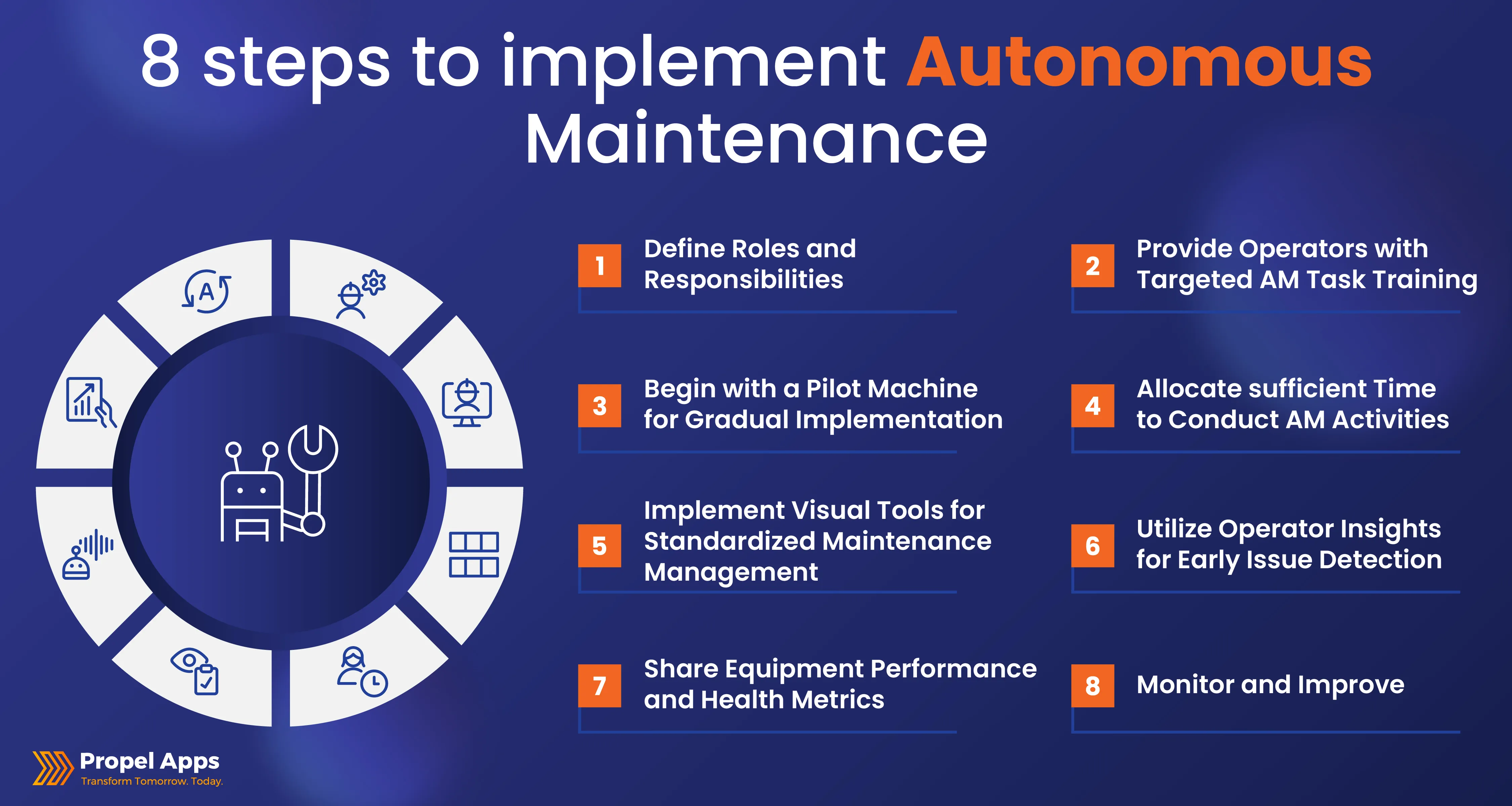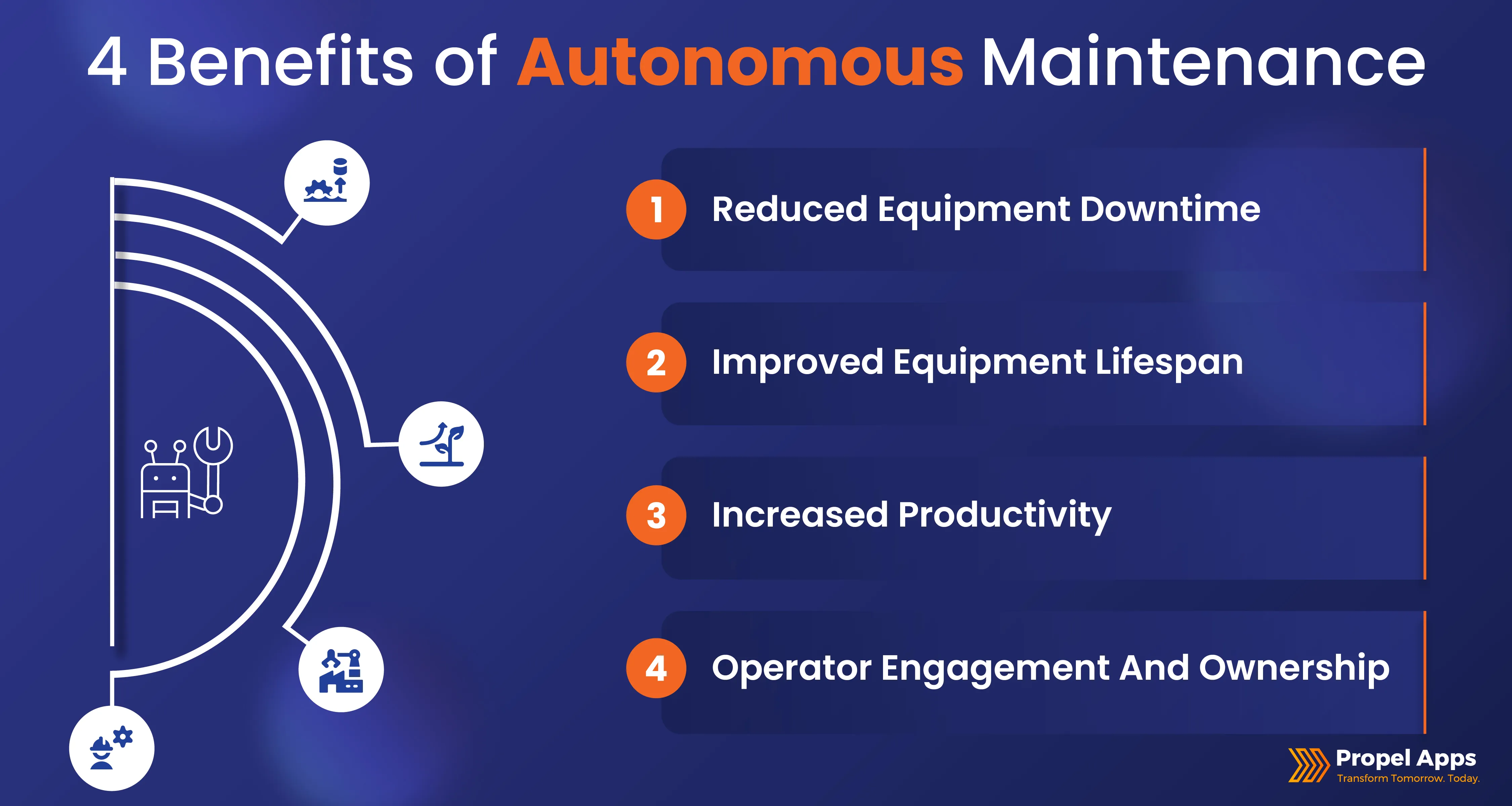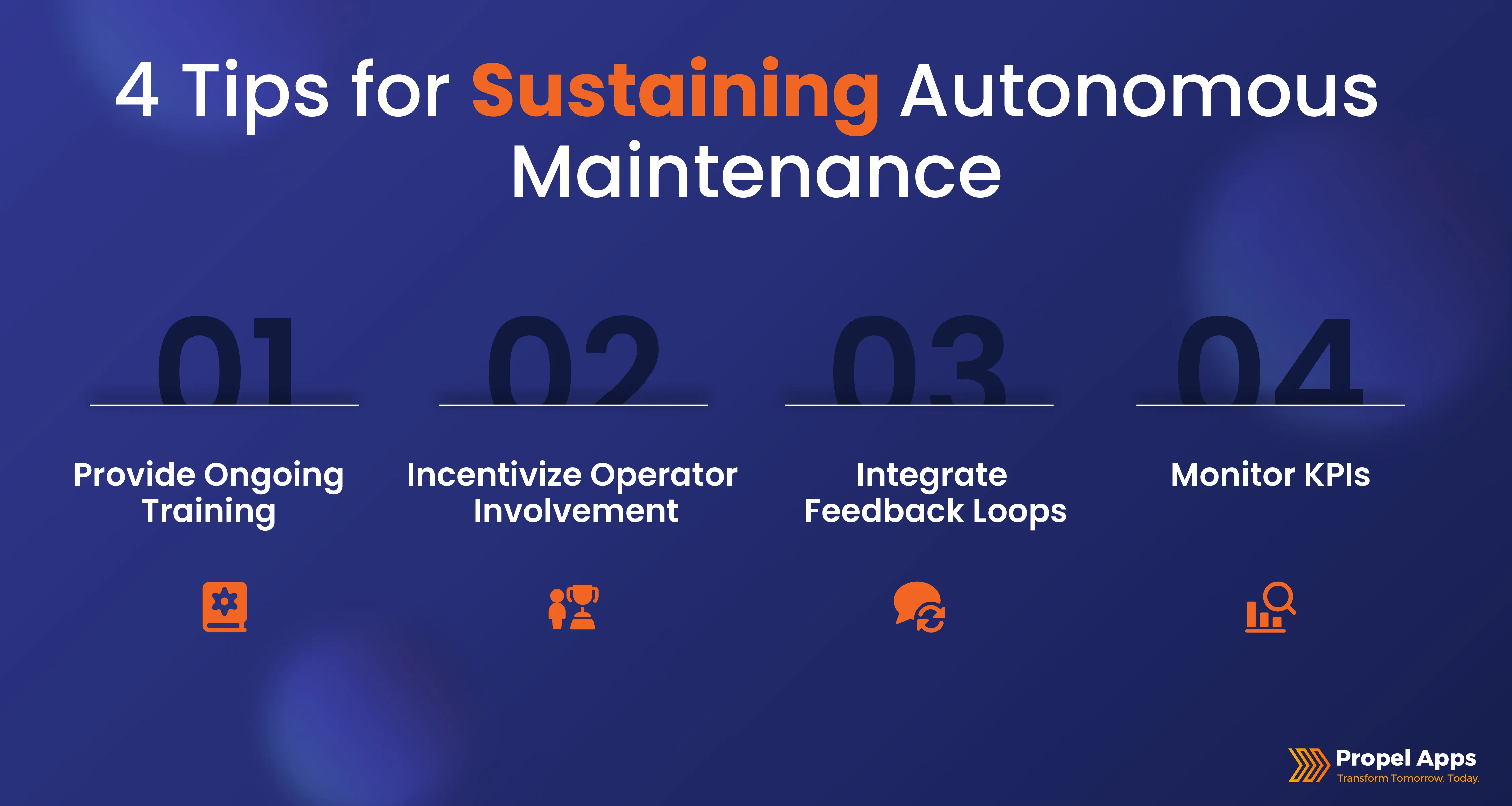
Autonomous Maintenance (AM) is transforming how organizations manage their equipment. This strategy empowers operators to take a proactive role in maintaining their machines—reducing breakdowns and improving efficiency.
.webp)
In industries where downtime costs thousands of dollars per hour, Autonomous Maintenance ensures that machines stay reliable and efficient. The principle is simple—“a well-maintained machine is a profitable one.” With AM, operators keep their equipment running smoothly with minimal dependence on maintenance teams.
In this blog, we’ll explore what Autonomous Maintenance means, how to implement it step by step, its key benefits, and how technology—especially mobile maintenance solutions—enhances its success.
Autonomous Maintenance is a system where machine operators handle the basic upkeep of their equipment—tasks like cleaning, lubrication, and inspections. Instead of relying solely on maintenance teams, operators take ownership of their machines.
This boosts both equipment reliability and operator engagement. For instance, when operators check and lubricate their machines after each shift, they prevent unexpected breakdowns and keep production running smoothly.
According to the International Journal of Productivity and Performance Management, organizations adopting Autonomous Maintenance experience a 40% reduction in downtime and a 25% increase in productivity (source: ResearchGate).
Implementing Autonomous Maintenance is a structured journey that unfolds in eight steps.

Assign AM tasks to operators who handle the equipment daily. Their operational knowledge helps them understand how machines function. Establish a proactive inspection routine with a clear timeline to minimize unexpected failures.
Train operators in cleaning, inspection, lubrication, and minor repairs. This builds confidence, accuracy, and safety awareness. Well-trained operators manage basic upkeep effectively, boosting reliability and equipment life.
Begin with one machine or production line to fine-tune the process. A pilot phase identifies challenges and allows gradual scaling. This approach builds operator confidence and ensures smoother facility-wide adoption.
Give operators dedicated time for Autonomous Maintenance tasks. Treat this as part of their regular responsibilities. Proper scheduling prevents rushed inspections and promotes consistent machine care.
Visual factory tools—color coding, labeling, SOPs, and one-point lessons—simplify maintenance routines. Color-coded lubrication points or visual checklists help operators perform tasks consistently and detect issues early.
Operators often notice subtle changes in machine behavior before a breakdown occurs. Provide a simple way for them to report issues directly to maintenance teams. This collaboration strengthens the AM process and prevents costly failures.
Give operators access to performance data and Asset Condition Monitoring metrics. Understanding these KPIs helps them see the impact of AM on overall efficiency and encourages continuous improvement.
Review inspection and cleaning data to identify recurring issues. Adjust maintenance schedules accordingly. Continuous monitoring ensures AM evolves as your operations grow.
Autonomous Maintenance delivers measurable business value.

To keep Autonomous Maintenance effective, focus on long-term consistency.

Technology is central to the Future of Maintenance. It makes Autonomous Maintenance smarter and more efficient. Tools like IoT sensors, predictive analytics, and mobile maintenance solutions empower operators to manage assets proactively.
Predictive maintenance uses data analytics and sensors to forecast potential failures. This supports AM by identifying issues before they escalate, ensuring better machine health and operational continuity.
IoT sensors allow real-time communication between machines and operators. Alerts sent to mobile devices enable quick corrective action—key to effective Autonomous Maintenance.
Centralized digital platforms simplify scheduling, inspections, and reporting. They ensure no maintenance task is missed and give operators a complete view of asset performance.
A mobile asset management solution provides on-the-go access to maintenance checklists, work orders, and asset data. It enables remote collaboration and faster issue reporting. Operators can easily log findings, attach photos, and update asset conditions—improving decision-making and responsiveness.
Look for a mobile maintenance solution that integrates seamlessly with ERP systems like Oracle or SAP and works offline. This ensures reliability even in remote locations with limited connectivity.
Propel Apps’ mobile asset maintenance solution enhances Autonomous Maintenance and overall asset management. Built on Oracle EAM and design thinking, it gives maintenance teams access to:
This solution enables organizations to improve plant maintenance efficiency and empower their workforce.
To learn how Propel Apps can transform your maintenance operations, schedule a free demo today.
Autonomous Maintenance is more than a maintenance method—it’s a shift in how organizations view equipment management. By empowering operators, you reduce downtime, boost productivity, and extend machine life.
Following the eight implementation steps and embracing digital tools like predictive maintenance and mobile solutions prepares your organization for the Future of Maintenance. The result? A smarter, more engaged workforce and a more reliable production environment.
.jpg)